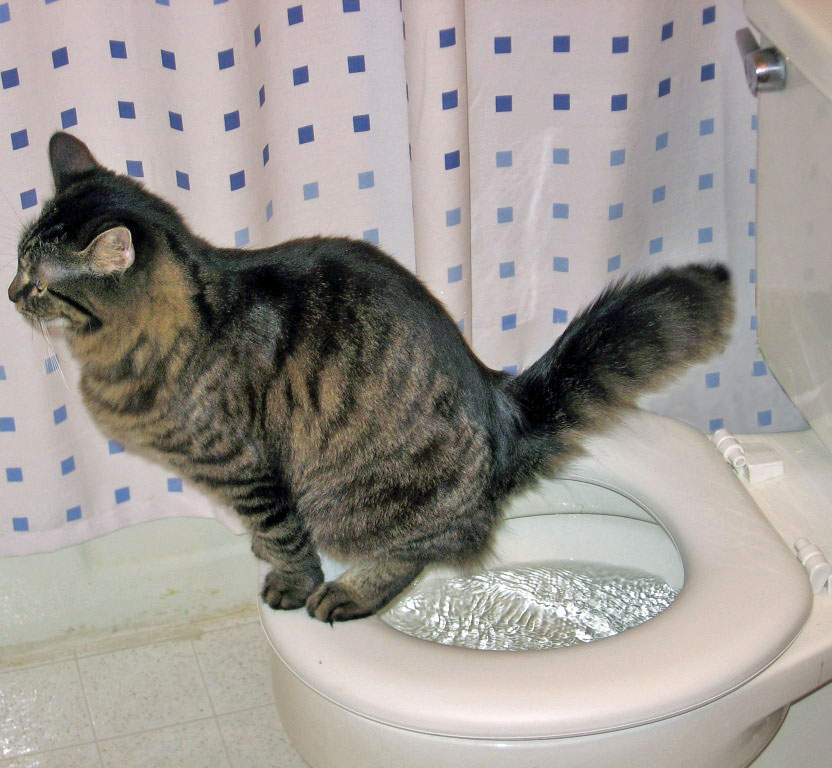We've discovered this great article about How to Dispose of Cat Poop and Litter Without Plastic Bags directly below on the net and think it made perfect sense to write about it with you here.

Introduction
As pet cat owners, it's essential to bear in mind how we throw away our feline buddies' waste. While it may appear convenient to flush pet cat poop down the toilet, this technique can have detrimental repercussions for both the atmosphere and human health and wellness.
Alternatives to Flushing
Luckily, there are more secure and much more responsible methods to deal with feline poop. Take into consideration the complying with choices:
1. Scoop and Dispose in Trash
The most typical method of dealing with pet cat poop is to scoop it into an eco-friendly bag and throw it in the trash. Make certain to use a committed litter scoop and take care of the waste quickly.
2. Usage Biodegradable Litter
Go with biodegradable feline trash made from products such as corn or wheat. These litters are environmentally friendly and can be safely taken care of in the garbage.
3. Hide in the Yard
If you have a yard, consider burying cat waste in a designated area away from vegetable gardens and water resources. Make certain to dig deep sufficient to stop contamination of groundwater.
4. Mount a Pet Waste Disposal System
Purchase an animal garbage disposal system particularly created for pet cat waste. These systems make use of enzymes to break down the waste, decreasing smell and environmental influence.
Health and wellness Risks
Along with ecological problems, purging feline waste can additionally posture health risks to people. Feline feces may contain Toxoplasma gondii, a bloodsucker that can trigger toxoplasmosis-- a potentially severe disease, particularly for pregnant ladies and people with damaged body immune systems.
Ecological Impact
Purging cat poop introduces harmful virus and parasites right into the supply of water, presenting a significant threat to aquatic environments. These impurities can adversely influence aquatic life and concession water high quality.
Conclusion
Responsible pet ownership extends beyond giving food and sanctuary-- it additionally includes correct waste administration. By avoiding purging feline poop down the bathroom and choosing different disposal approaches, we can reduce our environmental impact and protect human wellness.
Why Can’t I Flush Cat Poop?
It Spreads a Parasite
Cats are frequently infected with a parasite called toxoplasma gondii. The parasite causes an infection called toxoplasmosis. It is usually harmless to cats. The parasite only uses cat poop as a host for its eggs. Otherwise, the cat’s immune system usually keeps the infection at low enough levels to maintain its own health. But it does not stop the develop of eggs. These eggs are tiny and surprisingly tough. They may survive for a year before they begin to grow. But that’s the problem.
Our wastewater system is not designed to deal with toxoplasmosis eggs. Instead, most eggs will flush from your toilet into sewers and wastewater management plants. After the sewage is treated for many other harmful things in it, it is typically released into local rivers, lakes, or oceans. Here, the toxoplasmosis eggs can find new hosts, including starfish, crabs, otters, and many other wildlife. For many, this is a significant risk to their health. Toxoplasmosis can also end up infecting water sources that are important for agriculture, which means our deer, pigs, and sheep can get infected too.
Is There Risk to Humans?
There can be a risk to human life from flushing cat poop down the toilet. If you do so, the parasites from your cat’s poop can end up in shellfish, game animals, or livestock. If this meat is then served raw or undercooked, the people who eat it can get sick.
In fact, according to the CDC, 40 million people in the United States are infected with toxoplasma gondii. They get it from exposure to infected seafood, or from some kind of cat poop contamination, like drinking from a stream that is contaminated or touching anything that has come into contact with cat poop. That includes just cleaning a cat litter box.
Most people who get infected with these parasites will not develop any symptoms. However, for pregnant women or for those with compromised immune systems, the parasite can cause severe health problems.
How to Handle Cat Poop
The best way to handle cat poop is actually to clean the box more often. The eggs that the parasite sheds will not become active until one to five days after the cat poops. That means that if you clean daily, you’re much less likely to come into direct contact with infectious eggs.
That said, always dispose of cat poop in the garbage and not down the toilet. Wash your hands before and after you clean the litter box, and bring the bag of poop right outside to your garbage bins.
https://trenchlesssolutionsusa.com/why-cant-i-flush-cat-poop/

As a serious reader about Don’t flush cat feces down the toilet, I assumed sharing that excerpt was a good idea. Appreciated our content? Please share it. Help other people find it. We enjoy reading our article about Can You Flush Cat Poop Down The Toilet?.
Call Today